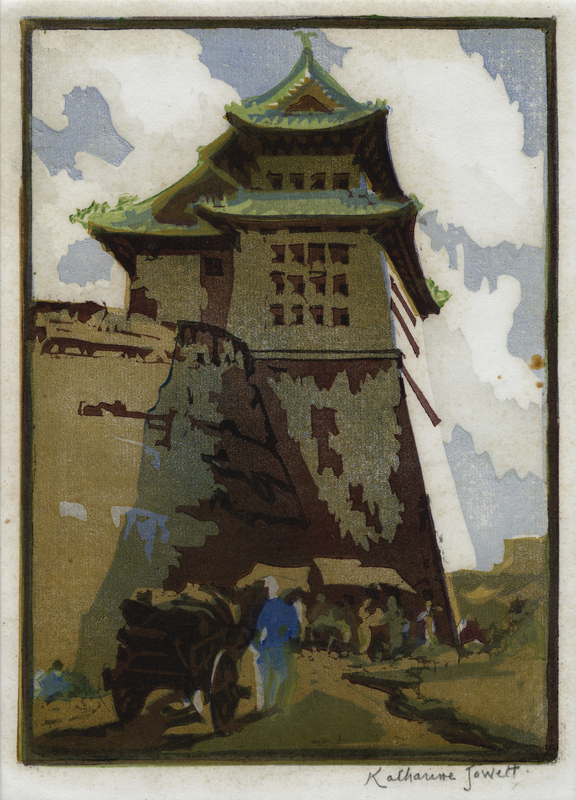
19th, 20th & 21st Century Fine Prints
707-546-7352 · fax 707-546-7924 · web: www.annexgalleries.com · email: artannex@aol.com
Gate of the Rising Sun. Peking by Katharine Jowett

Gate of the Rising Sun. Peking
Katharine Jowett
Title
Gate of the Rising Sun. Peking
Artist
Katharine Jowett
1890 - 1965 (biography)Year
c. 1930
Technique
color blockprint
Image Size
8 x 5 3/4" image
Signature
pencil, lower right, margin
Edition Size
n/a
Annotations
Reference
Paper
cream laid
State
published
Publisher
artist
Inventory ID
KD103
Price
SOLD
Description
Katharine Jowett was an English artist best known for her luminous color block prints of Chinese landscapes around the Peking/Beijing area. Katharine was born in Devon around 1890 into a religious family. She was the daughter of Reverend Timothy Wheatley, minister at the Mint Methodist Church in Exeter. Originally from the North of England, Reverend Wheatley had married into a Devon family, the Pearses, who were early followers of John Wesley. In her early twenties, Katharine followed a Methodist missionary, with whom she was in love, to China, but found on arrival in Peking that she did not want to marry him after all. Instead, she married Hardy Jowett, a prominent member of the British community in Peking, by whom she had two sons. The Jowett family may have known Bertha Lum, who lived in China around the same time. Most of Katharine Jowett's prints depict temples and other famous landmarks in and around the Peking area. She carved and printed her designs using linoleum blocks and oil-based inks. Her prints are rather small and have a dark thick border around the edges, reminiscent of Arts and Crafts woodcuts. Unlike Japanese shin hanga artists, Jowett did not use a key block to outline her designs. Instead, she layered the colors one on top of another like a painting. This gives her work a hazy impressionistic feel, distinctly different from the precisely defined areas of color in traditional Japanese prints. Jowett is thought to have produced around 20 different prints, only some of which were in numbered editions. Her pictures, particularly her prints, were very popular in China in the twenties and thirties and not just with the Western community. Even Chairman Mao had a set of her prints in his study. Two of Jowett's linoleum cuts were used to illustrate cultural essays that appeared in "The Christian Science Monitor" in 1934-35. Jowett's husband died in 1936 and she was interned by the Japanese during World War II. She met a German baron in the prisoner-of-war camp, to whom she became very attached, but whom she never married. After the war, Jowett returned to England and lived mainly in Okehampton where her younger son practiced medicine. She continued to paint, but her later paintings, although charming, lack the vitality and interest of her Chinese pictures. She died twenty years after her return and is buried in the Pearse family graveyard in Sticklepath, just outside Okehampton. Katharine Jowett's block prints of China continue to be sought after by modern collectors, depicting as they do a vanished world, largely destroyed in the upheavals of the mid-twentieth century. Information courtesy of www.hanga.com. Copyright 2008.
